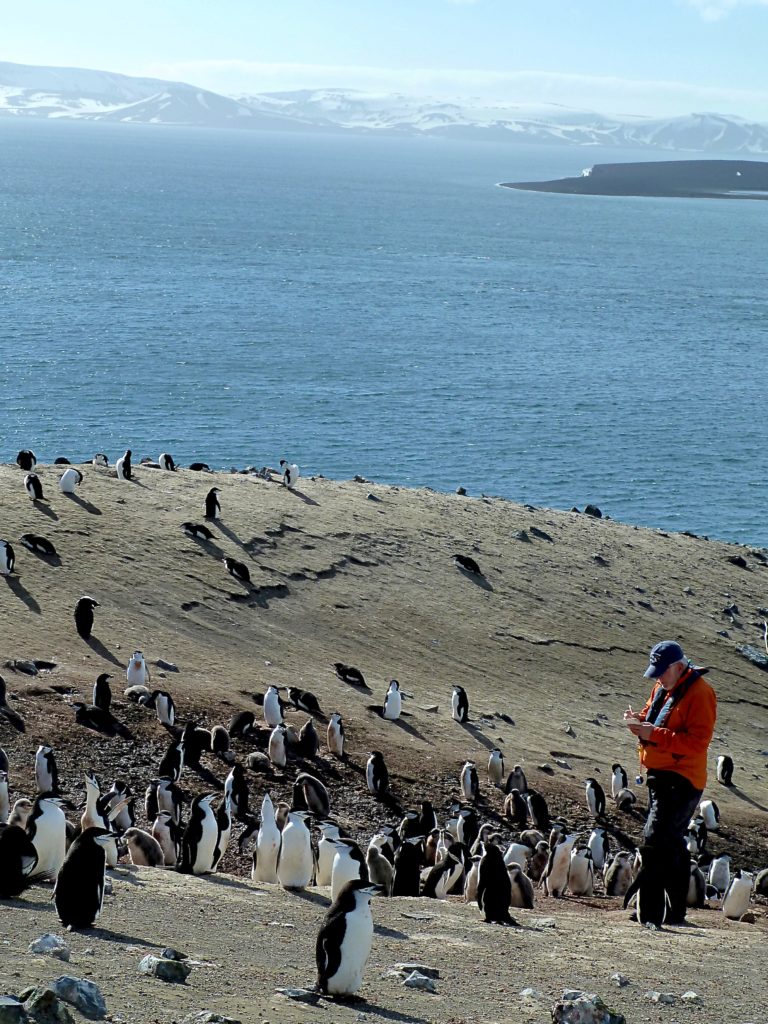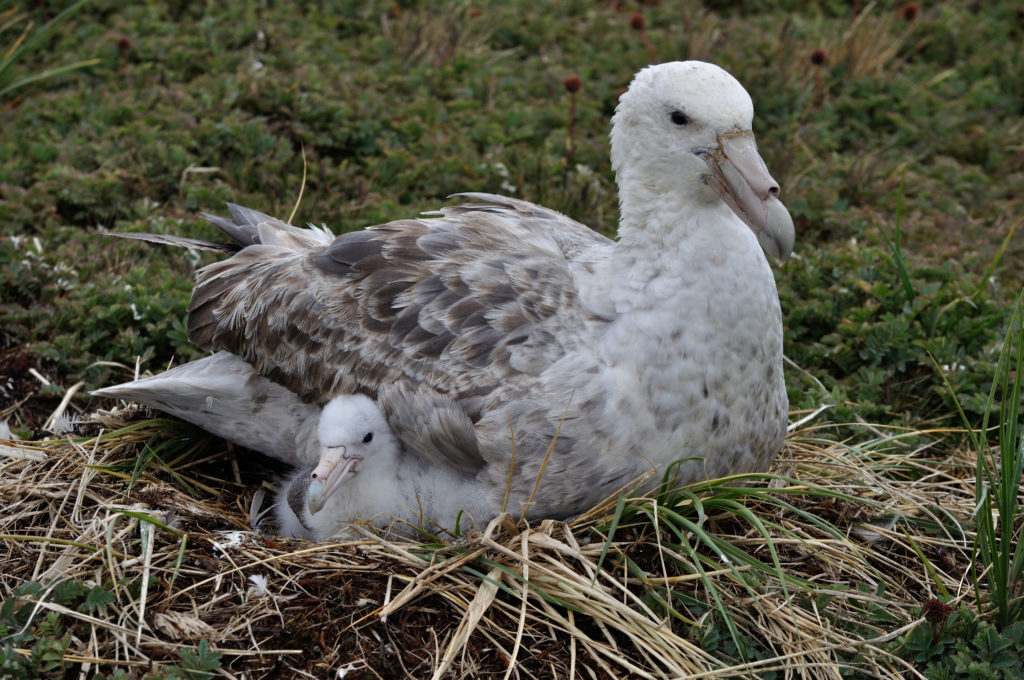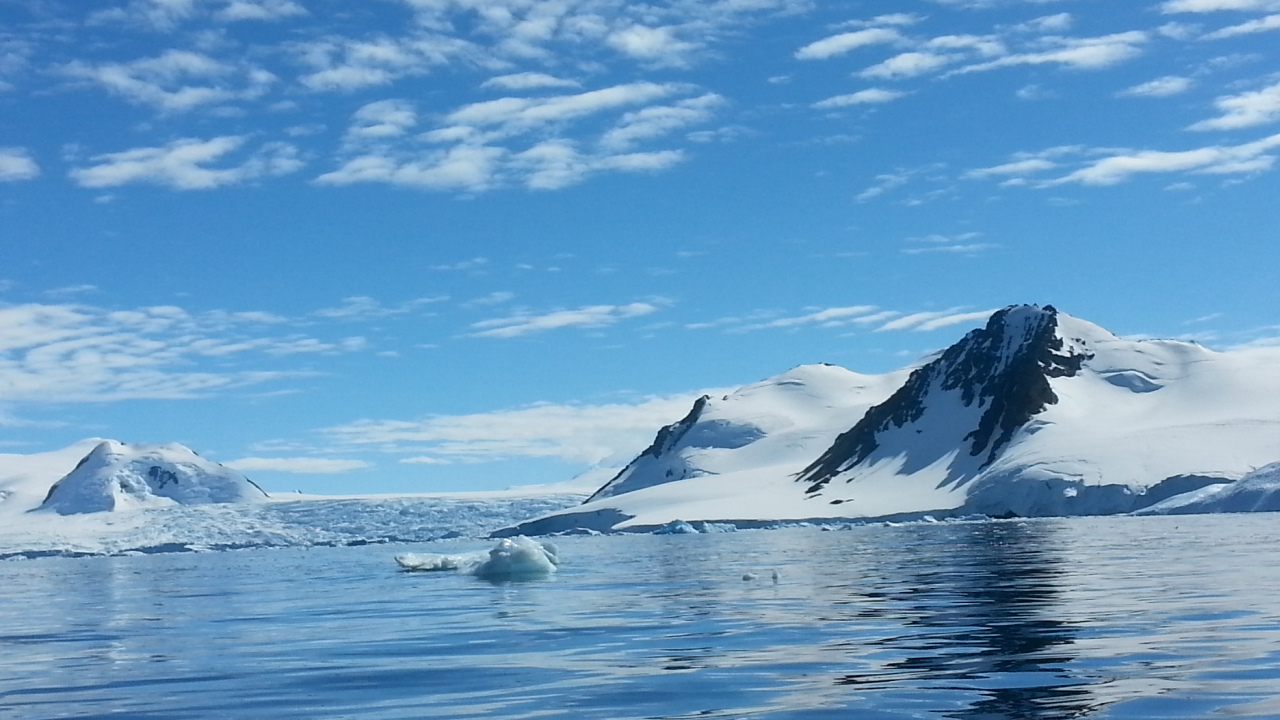Environmental protection is a vital part of our work. We have invested regularly over the years in environmental studies and science and also strongly support the Antarctic Treaty’s 1991 Protocol on Environmental Protection which aims to provide:
“…comprehensive protection of the Antarctic environment and dependent and associated ecosystems and … designate Antarctica as a natural reserve, devoted to peace and science.”
Despite being the most visited part of the continent, the Territory is one of the best protected; there are 31 Antarctic Specially Protected Areas in the Territory as well as Antarctica’s first ever Marine Protected Area (the latter a result of British science and initiative).
In order to protect the Territory’s environment, we seek to :
- Develop a better understanding of the BAT environment;
- Develop and implement best Antarctic environmental practices;
- Enhance UK expertise on tourism management and minimising human impacts;
- Identify rare flora and fauna and/or special areas across the BAT and development of protection and conservation measures;
- Proactively manage key Protected Areas in the Territory;
- Identify future environmental challenges, including climate change, and development of mitigation measures.
To help achieve these aims we have directly funded a wide range of environmental projects which have contributed towards protection of biodiversity and delivery of our strategy. Previous projects have included production of a Wildlife Awareness Manual, development of a “toolkit” to aid and facilitate management of marine protected areas, a DNA survey to assess distribution of penguin colonies and the impacts of climate change, identification of important bird areas in the Antarctic Peninsula, and identification and development of Marine Protected Areas. Some further examples are below.
Oceanites
We have worked with Oceanites for more than two decades, regularly assisting what is now a 26-year penguin and seabird data collection by Oceanite’s Antarctic Site Inventory (ASI). This has helped efforts to better understand climate change impacts in the vastly warmed Antarctic Peninsula. The data ultimately assists environmental protection across the entire Antarctic Peninsula. Over the years Oceanites has helped successful efforts to establish both general guidance for all Antarctic visitors and a series of site-specific management guidelines.
Oceanites’ Antarctic Site Inventory (ASI) has been monitoring and analysing penguin and seabird population changes in the Antarctic Peninsula since 1994. Oceanites represents the world’s only non-profit, publicly supported Antarctic research program and the only project monitoring the entire Antarctic Peninsula region.

Oceanites’ Mapping Application for Penguin Populations and Projected Dynamics (MAPPPD) database launched in October 2016. It makes publicly available continent-wide Antarctic penguin population data and descriptive information. MAPPPD now comprises data from over 660 sites across the entire Antarctic continent.
Oceanites draws public attention to climate change, penguins, and Antarctica through its annual State of Antarctic Penguin reports, which are compiled using MAPPPD and summarise the status — population size and population trends — of Antarctica’s penguins. Further information on the work of Oceanites can be found its website.
Joint Nature Conservation Committee
The Agreement on the Conservation of Albatrosses and Petrels (ACAP) is a multilateral treaty seeking to conserve albatrosses and petrels by coordinating international activity to mitigate threats to their populations. The UK ratified ACAP in 2004, and includes the British Antarctic Territory (BAT) along with other UK South Atlantic Overseas Territories. Work on ACAP in BAT is co-ordinated by the UK’s Joint Nature Conservation Committee (JNCC) with an officer based in the Falkland Islands. The JNCC ensure that we remain effectively engaged in ACAP’s ongoing work and initiatives, along with assisting with advice and assistance on other conservation issues of local importance.
Of the ACAP listed species, the Southern Giant Petrel (Macronectes giganteus) is the only one to breed in BAT, and in Antarctica. There are other listed species who visit regularly as migrants. Approximately 20% of the global breeding population of Southern Giant Petrels are found in Antarctica.

Blue Belt Programme
The Blue Belt Programme supports delivery of the UK’s long term protection for the marine environment. BAT lies within the jurisdiction of the Convention on the Conservation of Antarctic Marine Living Resources (CCAMLR), and UK scientists have worked closely through CCAMLR to ensure that the BAT marine environment is managed under CCAMLR measures to the highest international standards, with effectively regulated marine activities underpinned by robust science.
We provided funding to UK scientists which led to the UK securing agreement through CCAMLR to establish the first Marine Protected Area (MPA) in the Southern Ocean, around the South Orkney Islands Southern Shelf, in 2009. The MPA, which covers 94,000 km2, is an IUCN Category I (No Take) area, and protects benthic and pelagic habitats and a range of biodiversity representative of the Southern Scotia Sea region. The MPA will be reviewed by CCAMLR in 2019/20 and the preparation for the review will be supported by the Blue Belt programme. The UK is also a co-sponsor of a proposal to create a MPA in the Weddell Sea, and supports the development of a MPA proposal around the Antarctic Peninsula.

